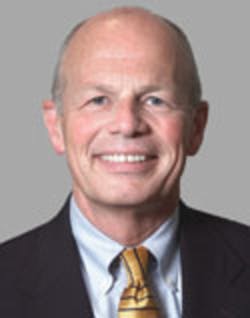A new PM system improves practice performance with time-saving functionality and robust appointment scheduling features.
Sooner or later, medical groups that still rely on aging practice management (PM) systems that run on older technology platforms have to face up to the necessity of investing in a new system based on current technology. Systems that may have provided adequate performance when first installed years ago are just not up to the intensifying data management demands of a modern group practice today. Poor IT performance hinders the efficiency of essential business operations, and inefficiencies constrain practice growth and threaten profitability.
A new PM system improves practice performance with time-saving functionality and robust appointment scheduling features.
Sooner or later, medical groups that still rely on aging practice management (PM) systems that run on older technology platforms have to face up to the necessity of investing in a new system based on current technology. Systems that may have provided adequate performance when first installed years ago are just not up to the intensifying data management demands of a modern group practice today. Poor IT performance hinders the efficiency of essential business operations, and inefficiencies constrain practice growth and threaten profitability.
The groups that came together to create The Children’s Medical Group (CMG) had been using a UNIX-based PM system, and we stayed with that software for several years. However, by the end of 2004, our management team concluded that it was time to implement a new PM solution. We wanted a Windows-based, client/server system that would be faster and easier for our employees to learn and use. We also hoped that a new system would provide superior reporting and much more flexible appointment scheduling features and functions.
Based in Poughkeepsie, N.Y., CMG was formed in 1997 by the merger of two successful pediatric practices. The original groups, Pediatric and Adolescent Associates (founded in 1932), and the Hudson Valley Pediatric Group (founded in 1952), had a long and distinguished history of caring for children in the Hudson River Valley region. Today, CMG has eight offices with 23 providers. A thriving practice, CMG grew by an average of 315 new patients per month in 2006.
In less than a year after implementing MicroMD PM from Henry Schein Medical Systems as our new system in March 2006, CMG achieved substantial improvements in the core operations of our practice. Investing in healthcare IT so that we could adopt a robust, full-featured PM system has enabled us to master the management of our practice.
Objectives, IT Requirements
To keep pace in our busy offices, CMG needed faster system performance and better response time. With our previous PM system, our staff had to access and scroll through multiple screens to accomplish simple tasks, such as signing in a patient or checking on an appointment. If they were interrupted in the middle of a multiscreen sequence, they would often have to start over. Completing routine tasks was taking too long, and new employees found it difficult to learn the keystroke commands. To meet our objectives of faster software that would be easy to learn and more efficient to use, Windows-based, client/server technology was our main IT requirement for a new PM system.
As the practice continues to grow, we need to maintain our commitment to being as responsive and accommodating to our patients as possible. Therefore, the ability to see at a glance the entire day’s schedule at each office, greater flexibility in appointment scheduling, and the ability to customize appointment types were also essential requirements. To effectively manage a group practice, it is imperative that financial reports, which track the entire business, are generated quickly and accurately. Waiting hours for reports to run had become unacceptable for us; we needed a system that would also provide faster and more robust reporting.
Solution Selection
The evaluation and selection of a solution was an 11-month process that began in January 2005. Since PM software is mission-critical to our organization and represents a substantial investment, we took our time in order to be as thorough as possible in the consideration of alternatives. Our software evaluation and selection team included 13 members: myself among them, along with managers and directors from several departments, administrative coordinators and one physician. We carefully considered the size and composition of the selection team to ensure appropriate representation from all types of system users.
We did not want so large a group that it would be unwieldy, but we needed the right mix of users to undertake a sound evaluation of system alternatives and to establish the basis for buy-in for the software ultimately selected. We started by formulating key priorities for a new system. As noted, these priorities included true Windows-based, client/server technology for platform stability and scalability as well as ease of use; fast and robust reporting; and, flexible scheduling functionality, including the ability to see the practice’s entire schedule at a glance.
CMG ultimately selected MicroMD PM from Henry Schein Medical Systems in November 2005. A main factor in the decision was the strength of the system’s appointment scheduling module that allows our office staff to reschedule or cancel appointments with time-saving drag-and-drop functionality instead of re-entering the data. Another feature of the system that we found would be of great benefit to us was the ability to recall patients while working in the scheduling module, which allows for entering multiple reasons for future patient visits.
Our staff has demonstrated greater accuracy in claims processing, and they have reduced our claims rejection rate by 20 percent. Less time is spent correcting errors, and more accurate claims yield faster payment and improved cash flow.
In the event a last-minute or walk-in patient cannot immediately be seen at one office, CMG can quickly check our other locations where we might be able to schedule them without undue waiting. The system also offers the flexibility to define and establish subaccounts under each patient account.
Considering today’s blended families, siblings may not share the same set of parents or legal guardians. With multiple insurance plans, subaccounts are essential to define which plan covers which specific child and to track which adults are authorized to make medical decisions.
We also took into account the good reputation that Henry Schein Medical Systems has earned among its users for its responsiveness, and the pricing of the system, which we found to be competitive.
Implementation
Data conversion, hardware configuration, software installation and training for the new system took a total of four months, primarily because of the complexity of converting our data. We knew that data conversion into a new system would be an issue since our implementation of the old system was highly customized, making the mapping of our data into a new database quite a challenge. The experience of Henry Schein Medical Systems in undertaking data conversions from our previous system proved to be a critical success factor. They ensured that we could transfer all the data from our old system without laborious manual data re-entry.
CMG deploys our PM system over a T-1 network with a central hub and a mixture of thin client PCs that depend primarily on the central server for processing activities and fat clients that do as much processing as possible and pass data for communications and storage to the server. Memory upgrades were necessary for many of our PCs to ensure optimal performance.
Costs
For more information on MicroMD’s Practice Management solution
Total costs came to approximately $145,000, including hardware (two servers, 10 clients, routers, printers, card readers and a scanner). Based on our assessment of prevailing pricing in the marketplace, the cost was in line with our expectations and management plan. We knew that we had to move from a terminal environment to a Windows-based PC one, and we were generally prepared for that. However, we did find that the operating systems on a number of our PCs had to be upgraded to work effectively with the new system. Post-installation, we have incurred modest incremental costs that we had not anticipated to add new providers to the database.
Results
By January 2007, less than a year after installation and implementation, CMG achieved solid improvements in the administration of our practice with our new PM system. Training new users is now much easier, and reporting much faster. It takes new employees only two to three days to learn the software versus at least two weeks for our old system. Reports that used to take hours to run are now available within minutes or even seconds, and the system provides us with a more extensive menu of standard financial reports. Similarly, our claims management efficiency has improved, and the amount of time it takes to process claims and post payments has been significantly reduced.
In the event a last-minute or walk-in patient cannot immediately be seen at one office, CMG can quickly check our other locations where we might be able to schedule them without undue waiting.
Tasks that previously required three to four hours are now accomplished in 10 minutes or less. A bulk check that used to take at least eight hours to post is now electronically posted in just two or three hours. Our staff has demonstrated greater accuracy in claims processing, and has reduced our claims rejection rate by 20 percent. Less time is spent correcting errors, and more accurate claims yield faster payment and improved cash flow. In addition, straight collections as a percentage of billed charges increased by about 15 percent. The flexibility of the new system provides the ability to customize appointment types, such as short visits for immunizations or sports physicals before the start of the school year, and has helped us schedule more patients per day. In fact, in 2006, CMG gained a 4 percent increase in the number of patient visits attributable to the system’s scheduling features.
Moving Forward
CMG expects our patient base to continue to expand, and that we will be adding more offices and services. The scalability of Windows-based, client-server technology will therefore continue to be critical to support the growth of our practice.
Many medical groups continue to muddle along with outdated systems even when it is clear that the system limitations impede the ability of office managers to carry out essential business operations. Replacing PM systems does take a substantial financial investment and it’s a management challenge, however, our experience at The Children’s Medical Group demonstrates that tangible improvements in practice performance make it worthwhile to make the transition to a state-of-the-art, Windows-based client/server system.




